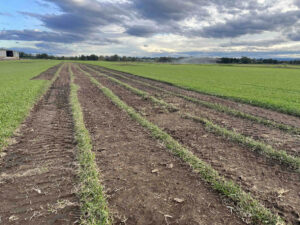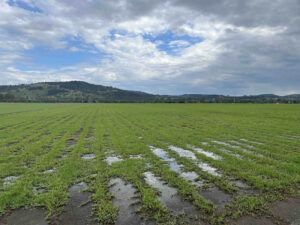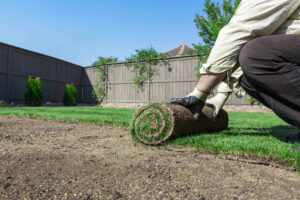The green side up
By Matthew Lunn
An iconic part of the home garden has been the humble lawn, but in recent times this terrific backyard addition is under threat. Plot sizes are getting smaller as the urban sprawl dictates city living in apartments and small courtyards, and where some are moving out of city dwellings where a nice turf area works well, the turf industry is faced with another phenomenon – artificial grass.
What is the future of the turf Industry?

With over 250 turf farms across Australia, the present picture continues to look positive with turf sales increasing yearly due to the continued growth in the housing market, major federal infrastructure works, state greening programs, and of course the rise in home renovations. However, whilst turf continues to be labelled a high maintenance, living green commodity it is critical the turf industry plays its part in advocating the real value in having a swathe of grass, not only in the home garden but also in the vast number of new greenspaces across many local neighbourhoods and new housing developments.
The turf producers peak body Turf Australia have a mission, and that is to make living turf a key component of tackling climate change. Although some are sceptical that turf is a poor cousin to living plants in a landscape, it is time for turf to have a seat at the table when discussing the environment and the impact it has on creating liveable green cities.
What makes this great groundcover so important to our lives?
The environment
- It absorbs carbon dioxide into plant matter and assists the soil in forming organic matter
- Turf traps dust, dirt, and smoke released into the atmosphere, keeping our air cleaner for us to breathe
- Over the lifetime of turf, it sequesters carbon to have an even better-than-neutral carbon impact
- Turf reduces pollution and runoff and mitigates flooding
- It assists in absorbing noise and noise pollution in urban areas
- Turf is nature’s air conditioning – homes with good lawns will be cooler and require less use of air conditioners
- Living turf is a natural bushfire-resilient retardant
- Turf has the ability to keep the environment some 30oC cooler than asphalt and synthetic grass, and 14oC cooler than bare soil
- It acts as a natural habitat for fauna but most importantly, by acting as a natural mulch over bare soil, it encourages a haven of beneficial microbes and other living organisms
Health and wellness
- Research has proven the benefits of green space, particularly turf, as vital to mental health
- Gardening in and around living plants, like turf, is therapeutic and healthy. It will lower blood pressure, reduce muscle tension, and have a major calming influence
- Large green community spaces have been shown in urban and city areas to help reduce crime and make them more desirable places to live and work
- Greenspaces, which a workforce can view and relax in, has proven to reduce stress and increase productivity
- Recreational space with turf encourages healthy sporting activities which stimulates a healthy lifestyle
Despite these key benefits the turf industry still faces threats from the vast array of lawn alternatives within the landscape industry.
On top of this, there is mounting pressure for landscapes designed for limited water usage with some local government organisations encouraging the removal of lawn to facilitate the reduction in water use. This is highlighted with the introduction of verge programs and the emergence of synthetic grass, which now hold a prominent position in the market which, to an uninformed home owner, may seem like an easy alternative.

The use of synthetic grass particularly is of major concern and although the turf industry acknowledges not every piece of ground can have natural turf, it believes the pitfalls need to be communicated to the vast number of homeowners who see synthetic turf as a simple solution to a poorly growing lawn.
Research has shown that synthetic grass can be up to 30oC hotter than natural turf, and in and around a residential property can elevate the temperature of the home thus requiring the need for additional air conditioning.
From an environmental aspect, it just doesn’t stack up. It contains toxic chemicals and rubber that can be leached into our soil, and in the event of fire the smoke from burning synthetic grass is incredibly toxic due to the levels of either polypropylene or polyethylene within it, and when removed to landfill, it just won’t break down.
Finally, it is not maintenance free. It requires water to keep it cool and to stop it breaking up under the sheer heat stress, and needs chemicals to keep it clean. In summary it’s just not natural. Turf Australia therefore has its work cut out with the end consumer but believes with strong advocacy at Commonwealth and State levels, as well as educating the vast amount of end users, that natural turf will continue to play an import role in our lives for so many reasons.
Matthew Lunn
CEO Turf Australia
T. 0410 714 207
Matt.lunn@turfaustralia.com.au
All images supplied by Turf Australia
Main photo: Laying real turf
Main photo: Laying real turf

